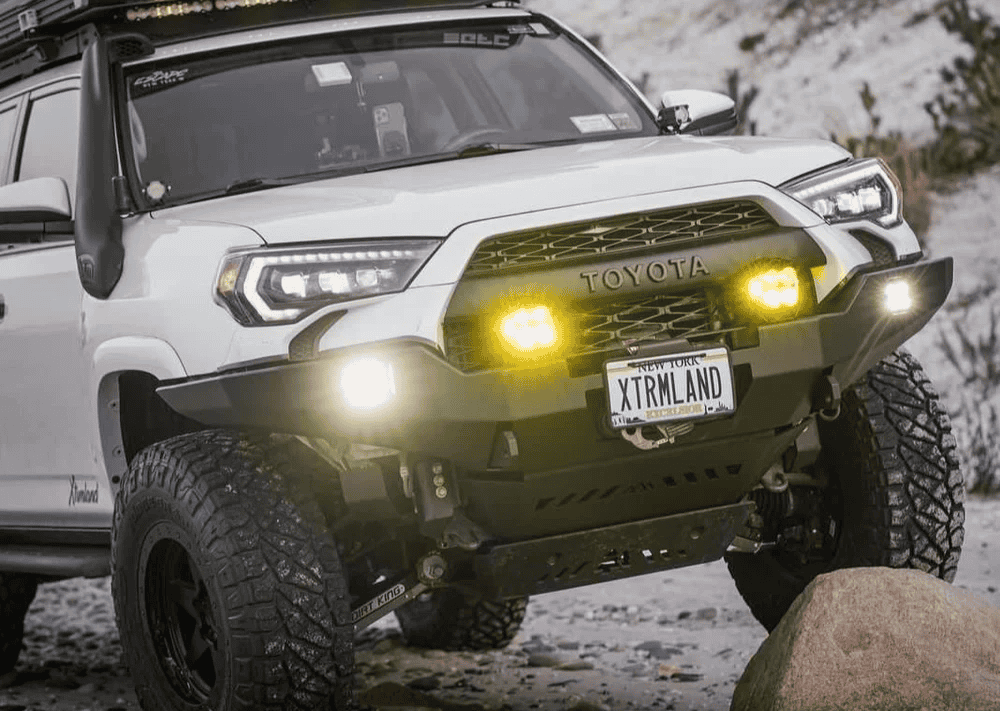Overland Vehicles

Both options store energy, but they serve different missions. A dual battery system adds a dedicated house battery to your vehicle, isolated from the starter battery so lights, fans, a fridge, and an inverter cannot strand you. It is wired into the vehicle with proper fusing, cabling, and a DC to DC charger or isolator so it charges while you drive. A power bank is a portable box with an internal battery, a charge controller, and a few output ports. It is easy to carry and simple to use, but it is not integrated with your alternator and often charges slower.
The practical effect shows up in daily use. High draw devices like induction cooktops, air compressors, or even a modest inverter for a laptop push a power bank close to its limits, especially across a full weekend. A dual battery with lithium chemistry sized for your loads can deliver consistent voltage and duty cycle with less stress. Meanwhile, your starter battery remains untouched, which protects cold starts and unexpected night moves.
A dual battery system also scales. You can add solar to the roof, tie in shore power charging, and monitor everything through a shunt or Bluetooth battery monitor. Most power banks accept solar and wall charging, but their input limits and thermal management can slow charge times and reduce usable capacity in heat or cold.
Fridges cycle all day. Vent fans run through the night. Diesel or gas fired heaters pulse the blower and the glow plug. A vehicle mounted house battery is built for continuous duty with proper cable gauge to minimize voltage drop. Power banks tend to prefer bursty, light loads and can sag under long inverter use, which trips protection circuits and cuts power at the worst moment.
Alternator charging is the trump card. With a DC to DC charger, a dual battery can accept steady current as you drive, recovering a full day of power during a grocery run. Many power banks are limited by small wall adapters or low solar input caps, stretching recovery time into many hours of idle. On trips with frequent moves, alternator charging wins on convenience and reliability.
Choose a dual battery when the vehicle is the base camp. If you rely on a 12 volt fridge, cabin fans, pumps, an air compressor, and an inverter for laptops and cameras, a second battery brings stable voltage and headroom. It protects the starter battery through isolation and gives you multiple charging paths, including alternator, solar, and shore power. The system can be sized with lithium iron phosphate for high cycle life, safe chemistry, and deep usable capacity.
A few common scenarios stand out:
Good dual battery installs use correct fusing at both ends, abrasion resistant cable routing, and a serviceable layout with labeled bus bars and breakers. The system is not only safer but also easier to troubleshoot on the road. Redundancy is built in, since the starter battery and house battery are independent. Power banks rely on internal protection and sealed cases, which are convenient but hard to repair if something fails far from a shipping label.
For minimal loads, a power bank is convenient and cost effective. Think headlamps, phones, a camera body, and a tablet. If you camp near grid power, or you spend most nights in places with charging access, a compact bank keeps it simple. Day hikers and weekend cyclists often appreciate the grab and go nature of a small unit that charges by wall or modest solar. In shoulder seasons without constant cooling or heating, light electronics are a clean fit for a portable bank.
Limitations appear with large inverters, compressor fridges, or continuous fans. Thermal throttling can slow both discharge and charge rates as the case warms. Input caps restrict how quickly you can refill the battery after a big day. If you do choose a power bank, look for honest depth of discharge ratings, clear inverter specs, and real world recharge times with solar and wall power. Test your workflow for a weekend before committing to longer miles.
While both approaches can coexist, most travelers end up using the power bank for personal devices and the vehicle system for camp life. Separating those roles cuts headaches and ensures the starter battery is ready when weather turns or plans change.
OZK Customs can translate these tradeoffs into a clean, reliable system that matches your loads, routes, and climate. Our team designs integrated power with proper isolation, DC to DC charging, and battery monitoring so your fridge stays cold and your vehicle starts every time. See our Overland rigs approach to understand how power fits into the full build. For tailored layouts and component choices, review the Custom overland upfit options that bring alternator, solar, and shore power into one plan. If you are new to the shop, learn what sets us apart on Why choose OZK Customs.
A reliable power system should disappear into the background. Tell us how you travel, what you power, and how often you move between camps. We will size the house battery, configure the DC to DC charging, and set up safe distribution so camp life becomes effortless and every start is dependable.
Ready for dependable off grid power that starts every morning and charges while you drive? Tell us how you travel and we will design a right sized dual battery system or integrated solution that fits your rig and your routes. Share your trip details and get a tailored plan today.
ADDRESS:
6159 E Huntsville Rd, Fayetteville, AR 72701
PHONE:
(479) 326-9200
EMAIL:
info@ozkvans.com